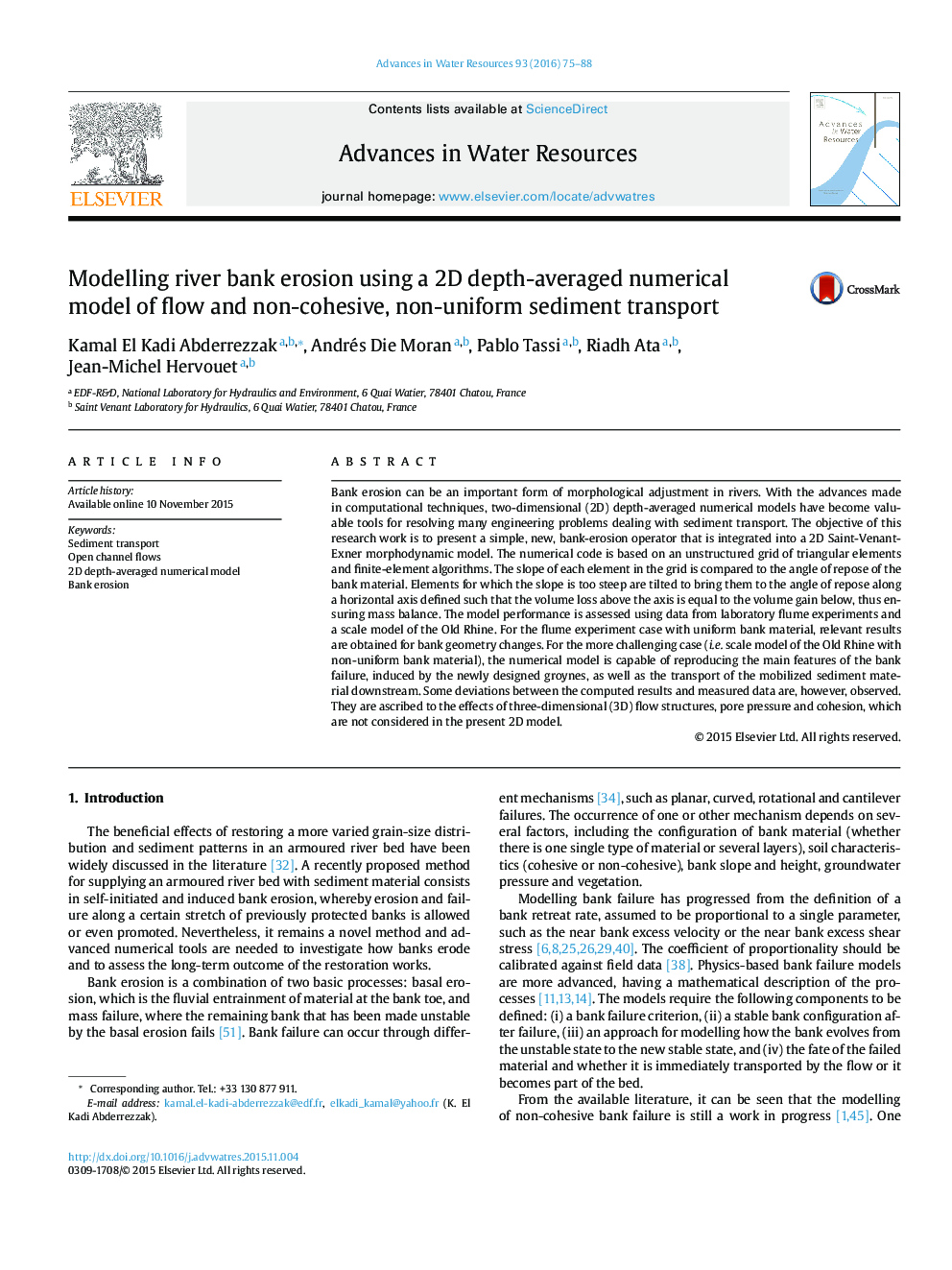| کد مقاله | کد نشریه | سال انتشار | مقاله انگلیسی | نسخه تمام متن |
|---|---|---|---|---|
| 4525250 | 1323746 | 2016 | 14 صفحه PDF | دانلود رایگان |

• A simple algorithm for bank failure is proposed and implemented in a 2-D depth-averaged numerical model.
• The bank slope operator is mass conservative.
• Laboratory experiments are numerically simulated and the numerical results are compared to measurements.
Bank erosion can be an important form of morphological adjustment in rivers. With the advances made in computational techniques, two-dimensional (2D) depth-averaged numerical models have become valuable tools for resolving many engineering problems dealing with sediment transport. The objective of this research work is to present a simple, new, bank-erosion operator that is integrated into a 2D Saint-Venant-Exner morphodynamic model. The numerical code is based on an unstructured grid of triangular elements and finite-element algorithms. The slope of each element in the grid is compared to the angle of repose of the bank material. Elements for which the slope is too steep are tilted to bring them to the angle of repose along a horizontal axis defined such that the volume loss above the axis is equal to the volume gain below, thus ensuring mass balance. The model performance is assessed using data from laboratory flume experiments and a scale model of the Old Rhine. For the flume experiment case with uniform bank material, relevant results are obtained for bank geometry changes. For the more challenging case (i.e. scale model of the Old Rhine with non-uniform bank material), the numerical model is capable of reproducing the main features of the bank failure, induced by the newly designed groynes, as well as the transport of the mobilized sediment material downstream. Some deviations between the computed results and measured data are, however, observed. They are ascribed to the effects of three-dimensional (3D) flow structures, pore pressure and cohesion, which are not considered in the present 2D model.
Journal: Advances in Water Resources - Volume 93, Part A, July 2016, Pages 75–88